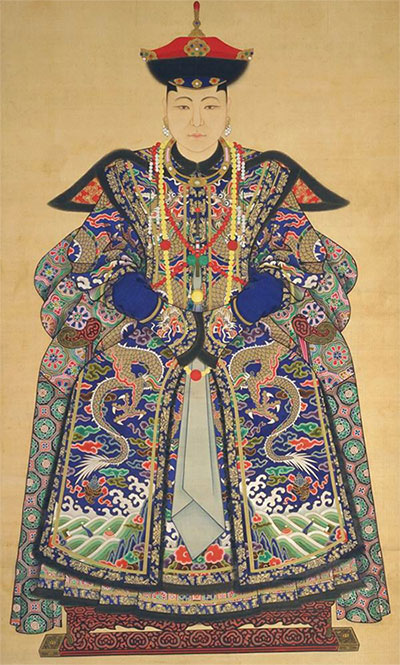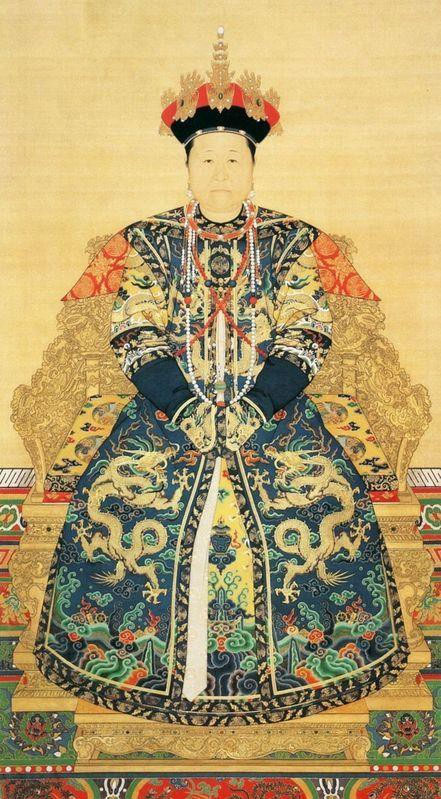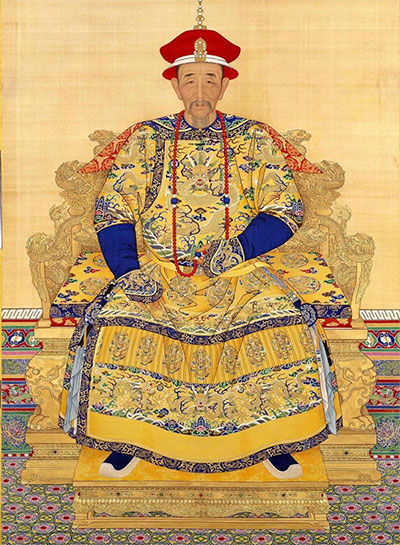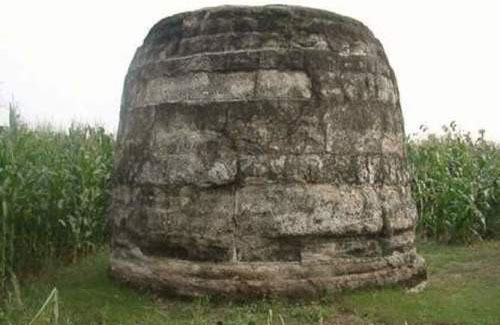Not born into nobility, not a concubine, and not vying for power, Su Ma Lat is celebrated as the most famous palace maid in Chinese history due to her talent and virtue.
Su Ma Lat was born into a poor family on the vast Khorchin Prairie. Her real name was Su Ma Er Ni or Su Ma Er, which in Mongolian means “a bag made of fur.” At the end of the Shunzhi era and the beginning of the Kangxi era, she changed her name to the Manchu version, Su Ma Lat, meaning “a medium-sized bag.” Initially just a palace maid serving the Empress Dowager, she was revered by the entire Qing dynasty royal family, including the emperor, empress, princes, and princesses, who respectfully referred to her as Lady Su Ma Lat.
Despite her humble beginnings, Su Ma Lat was exceptionally beautiful and intelligent. Thus, the steward of the noble family, Ba Yi Qi Ge Da Bo, chose her to serve as a lady-in-waiting to the Second Princess, Mu Bu Tai, who later became the renowned Empress Dowager Xiaozhuang in Qing history. Su Ma Lat made a strong impression after entering the noble household due to her thirst for knowledge. Within a few months, she became fluent in both Manchu and Chinese. Furthermore, Su Ma Lat became famous for her beautiful Manchu calligraphy. Because of this talent, Empress Dowager Xiaozhuang appointed her as the first Manchu writing teacher for her grandson, Kangxi. Kangxi himself often acknowledged that his beautiful handwriting was thanks to Su Ma Lat’s teaching.

Portrait of Lady Su Ma Lat. (Image: Internet).
Not only intelligent, but Su Ma Lat was also very skilled, especially in sewing. Any garment crafted by her hands drew admiration from all. The exquisite royal garments of the Qing dynasty were all made based on the original designs and patterns of Su Ma Lat.
Although Su Ma Lat was a palace maid of lowly origin, Empress Dowager Xiaozhuang always regarded her as a sister. For 60 years, they never parted ways. This bond grew especially strong after the death of Huang Taiji, the founder of the Qing dynasty. At that time, Empress Dowager Xiaozhuang was only 31 years old. Out of sympathy for the young widow, Su Ma Lat decided never to marry and to remain in the palace to serve her mistress.
Su Ma Lat’s status within the royal family was so special that Empress Dowager Xiaozhuang referred to her as “gēge,” a title reserved for women of high status in the royal family. Emperor Shunzhi always maintained formality when speaking to Su Ma Lat, and Emperor Kangxi called her “nanny” (the Manchu term for mother), while Kangxi’s princes and princesses referred to her as grandmother. What earned Su Ma Lat the utmost respect was that despite being revered by the royal family, she never exhibited arrogance, a desire for power, or pretentiousness.

Portrait of Empress Dowager Xiaozhuang. (Image: Internet).
When Kangxi ascended the throne, Empress Dowager Xiaozhuang became the Empress Dowager and expressed her wish to elevate Su Ma Lat’s status. However, Su Ma Lat declined, preferring to remain a palace maid serving the royal family. She continued to serve Empress Dowager Xiaozhuang until her passing in the 26th year of Kangxi’s reign (1687), when Su Ma Lat was over 70 years old.
The death of Empress Dowager Xiaozhuang plunged Su Ma Lat into such deep sorrow that she fell ill and could not eat or drink. Concerned for her, Kangxi decided to entrust the three-year-old Prince Yin Tao, son of the Concubine Ding, to Su Ma Lat’s care. According to Qing regulations, only those of rank Qi and above were allowed to raise princes. Thanks to Kangxi’s consideration, Su Ma Lat found renewed purpose in life and dedicated herself to the care of Prince Yin Tao.
Due to Su Ma Lat’s meticulous upbringing, Prince Yin Tao grew up healthier and more open-minded than many of his brothers. As he matured, he became one of Kangxi’s most trusted princes due to his intelligence and broad vision. While other princes were embroiled in power struggles, Yin Tao maintained a neutral position. Thus, after Yongzheng ascended the throne, Yin Tao was not only not marginalized but was also granted the title of Marquis and later Prince. Among Kangxi’s 35 princes, Yin Tao lived the longest, reaching the age of 79.

Emperor Kangxi regarded Lady Su Ma Lat as his mother. (Image: Internet).
Su Ma Lat had two peculiar habits that intrigued many. First, she never bathed throughout the year, only using a bit of water to cleanse herself on New Year’s Eve, which she would then drink. Second, she never took medicine, even when gravely ill. No one understood why Su Ma Lat maintained these habits for decades, even though she had the privilege to enjoy the luxury of the palace. It is known that she remained healthy and lived to over 90 years old.
In the 44th year of Kangxi’s reign (1705), Lady Su Ma Lat suddenly fell seriously ill, urinating blood and unable to eat or drink. The imperial physicians advised the princes to prepare for her funeral. At that time, Kangxi was on a northern tour. When news of Lady Su Ma Lat’s impending death reached the emperor, he wrote to the princes: “If anything happens to grandmother, remember to wait an additional 7 days before burial.” Kangxi’s intention was to meet his “nanny” one last time to bid her farewell.
To repay the contributions of Lady Su Ma Lat to the Qing dynasty and the kindness she showed in nurturing him, Kangxi decided to personally handle her funeral arrangements, even wearing mourning clothes for her. This had never happened in ancient Chinese history. At Lady Su Ma Lat’s funeral, not only did Emperor Kangxi weep uncontrollably, but princes, princesses, and concubines also shed tears in mourning for her.
After the funeral, Kangxi decided to place Lady Su Ma Lat’s coffin near that of Empress Dowager Xiaozhuang in the Temporary Ancestral Temple so that the mistress and maid could be reunited. When Yongzheng ascended the throne, he decided to renovate the Temporary Ancestral Temple into the Zhaoweiling Mausoleum. In addition to building a tomb for Empress Dowager Xiaozhuang, he also ordered the construction of a tomb for Lady Su Ma Lat nearby. The construction of her tomb took five months to complete.

The only remaining part of Lady Su Ma Lat’s tomb. (Image: Internet).
After the Eight-Nation Alliance attacked Beijing, Lady Su Ma Lat’s tomb was also affected. Nonetheless, a portion of her tomb still exists and attracts many tourists. Anyone who has heard the story of Lady Su Ma Lat’s life desires to visit and pay tribute to the most remarkable palace maid in Chinese history.
A Century-Old Lie
However, when archaeologists excavated the tomb of this palace maid, they discovered that it did not resemble the descriptions found in historical texts.
Although the scale of the tomb indeed matched that of a concubine’s tomb, there were no significant burial artifacts inside. There was no sign that the tomb had been robbed, indicating that this was the original appearance of the tomb.
Typically, if a tomb were constructed according to the customs for concubines, it would contain numerous ceremonial items of great value. If Emperor Kangxi truly had deep feelings for Lady Su Ma Lat, how could he have only decorated the exterior while leaving the inside of her tomb so barren?




















































